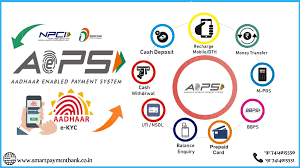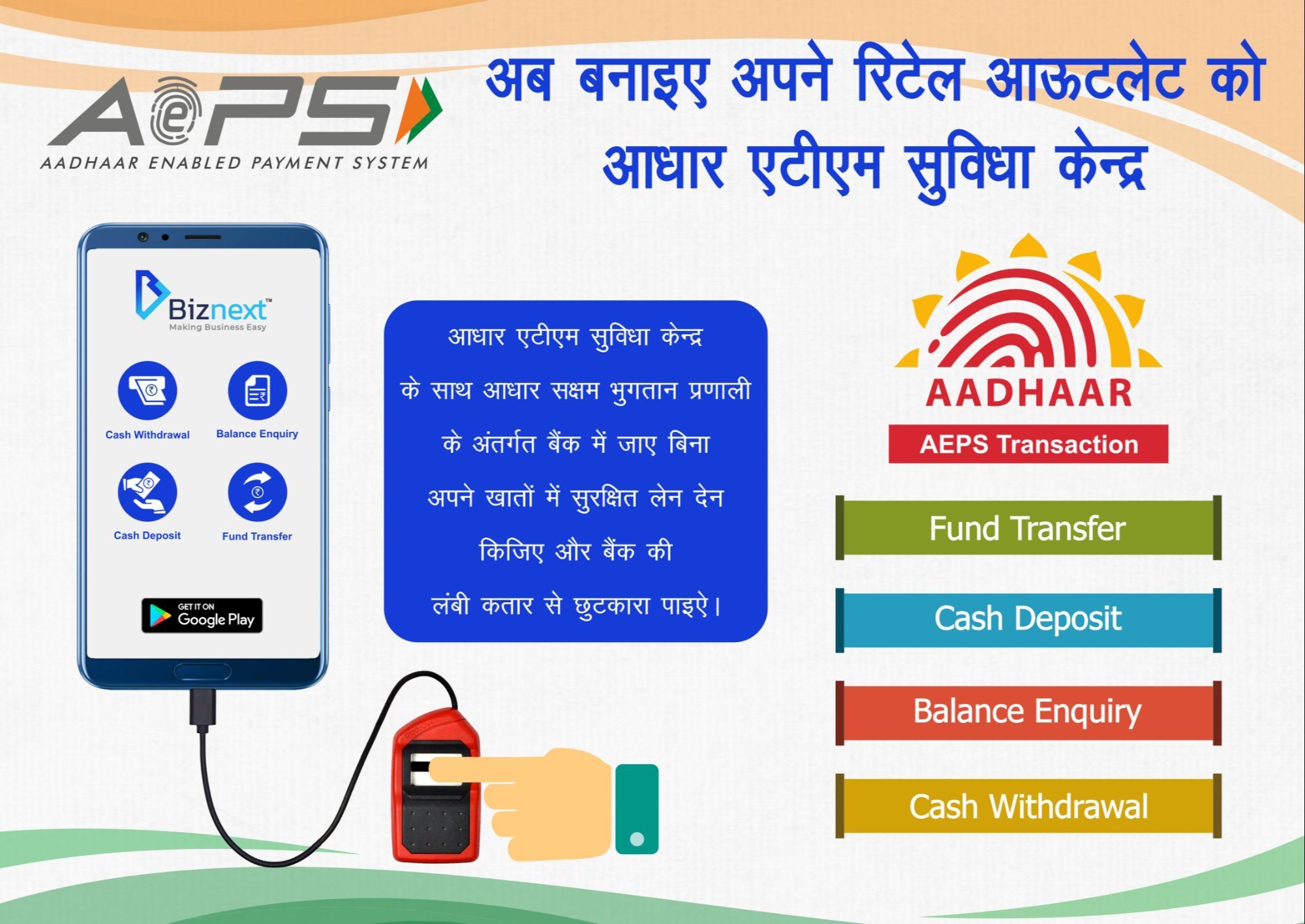Understanding AEPS: A Comprehensive Guide
In the rapidly evolving world of financial technology, AEPS (Aadhaar Enabled Payment System) has emerged as a groundbreaking solution for banking and financial transactions. But what exactly is AEPS, and how does it work? In this blog post, we’ll delve into the intricacies of AEPS, its benefits, and its impact on the financial landscape.
1. What is AEPS?
AEPS, or Aadhaar Enabled Payment System, is a banking service that leverages the Aadhaar biometric identification system to facilitate financial transactions. Introduced by the National Payments Corporation of India (NPCI), AEPS aims to make banking more accessible and inclusive, particularly for those in rural and remote areas.
2. How Does AEPS Work?
2.1 The Role of Aadhaar
At the core of AEPS is Aadhaar, a unique identification number issued by the Indian government. This system links a person’s biometric data (such as fingerprints) with their Aadhaar number, allowing for secure and accurate identification.
2.2 Transaction Process
When a user wants to perform a transaction using AEPS, they provide their Aadhaar number and biometric authentication. This data is verified against the records maintained by the Aadhaar database, ensuring that the transaction is both secure and accurate.
3. Key Features of AEPS

3.1 Biometric Authentication
One of the standout features of AEPS is its reliance on biometric authentication. This method significantly reduces the risk of fraud compared to traditional methods that rely on PINs or passwords.
3.2 Interoperability
AEPS is designed to be interoperable, meaning that users can access their accounts and perform transactions across different banks and financial institutions. This universal access is a significant advantage, especially in regions with limited banking infrastructure.
3.3 Financial Inclusion
AEPS plays a crucial role in promoting financial inclusion by providing banking services to underserved and remote populations. By using Aadhaar for authentication, it eliminates the need for traditional banking infrastructure, making financial services more accessible.
4. Types of Transactions Supported by AEPS
4.1 Cash Withdrawal
AEPS allows users to withdraw cash from their bank accounts using biometric authentication. This feature is particularly useful in areas where ATM infrastructure is lacking.
4.2 Balance Enquiry
Users can check their account balance through AEPS, providing a quick and easy way to monitor their finances without needing to visit a bank branch.
4.3 Fund Transfer
AEPS facilitates fund transfers between accounts. This service is not only convenient but also essential for users who need to send money to family members or businesses.
4.4 Aadhaar to Aadhaar Fund Transfer
This specific type of fund transfer allows users to send money from one Aadhaar-linked account to another, making transactions simple and secure.
5. Benefits of AEPS
5.1 Enhanced Security
Biometric authentication adds an extra layer of security, reducing the likelihood of unauthorized transactions and fraud.
5.2 Convenience
AEPS eliminates the need for traditional banking infrastructure, allowing users to perform transactions at various locations, including Aadhaar-enabled micro ATMs and point-of-sale (POS) terminals.
5.3 Cost-Effective
For banks and financial institutions, AEPS reduces the need for expensive infrastructure investments, making it a cost-effective solution for expanding their services.
5.4 Inclusive Banking
AEPS promotes financial inclusion by providing services to underserved areas, thus bridging the gap between urban and rural banking access.
6. Challenges and Considerations
6.1 Technical Issues
While AEPS is a robust system, it’s not immune to technical glitches. Network issues and biometric errors can sometimes hinder the transaction process.
6.2 Privacy Concerns
The use of biometric data raises privacy concerns. It’s crucial to ensure that this data is securely stored and managed to prevent misuse.
6.3 Awareness and Adoption
For AEPS to be effective, there needs to be widespread awareness and adoption among users. Education and training are essential to ensure that individuals are comfortable using the system.
7. The Future of AEPS
7.1 Technological Advancements
As technology evolves, AEPS is likely to incorporate more advanced features and integrations, further enhancing its efficiency and user experience.
7.2 Expansion and Integration
With ongoing efforts to expand AEPS services, we can expect broader integration with various financial and government services, increasing its utility and impact.
7.3 Policy and Regulation
Future developments in AEPS will also be influenced by policy changes and regulatory updates. Staying informed about these changes will be crucial for both users and service providers.
8. Conclusion
AEPS represents a significant leap forward in making financial services more accessible and secure. By leveraging biometric authentication and the Aadhaar system, it addresses many of the challenges associated with traditional banking, particularly in underserved areas. As AEPS continues to evolve, it has the potential to further transform the financial landscape, making banking services more inclusive and efficient.
FAQs
1. What is the Aadhaar Enabled Payment System (AEPS)?
AEPS is a banking service that uses Aadhaar biometric identification to facilitate secure and accessible financial transactions.
2. How does AEPS ensure the security of transactions?
AEPS uses biometric authentication to verify the identity of users, significantly reducing the risk of fraud and unauthorized transactions.
3. What types of transactions can be performed using AEPS?
AEPS supports cash withdrawals, balance enquiries, fund transfers, and Aadhaar to Aadhaar fund transfers.
4. Can AEPS be used in remote and rural areas?
Yes, AEPS is designed to enhance financial inclusion and can be used in remote and rural areas where traditional banking infrastructure is limited.
5. What are the main challenges associated with AEPS?
Challenges include technical issues, privacy concerns regarding biometric data, and the need for widespread awareness and adoption.




good ! Understanding AEPS: A Comprehensive Guide